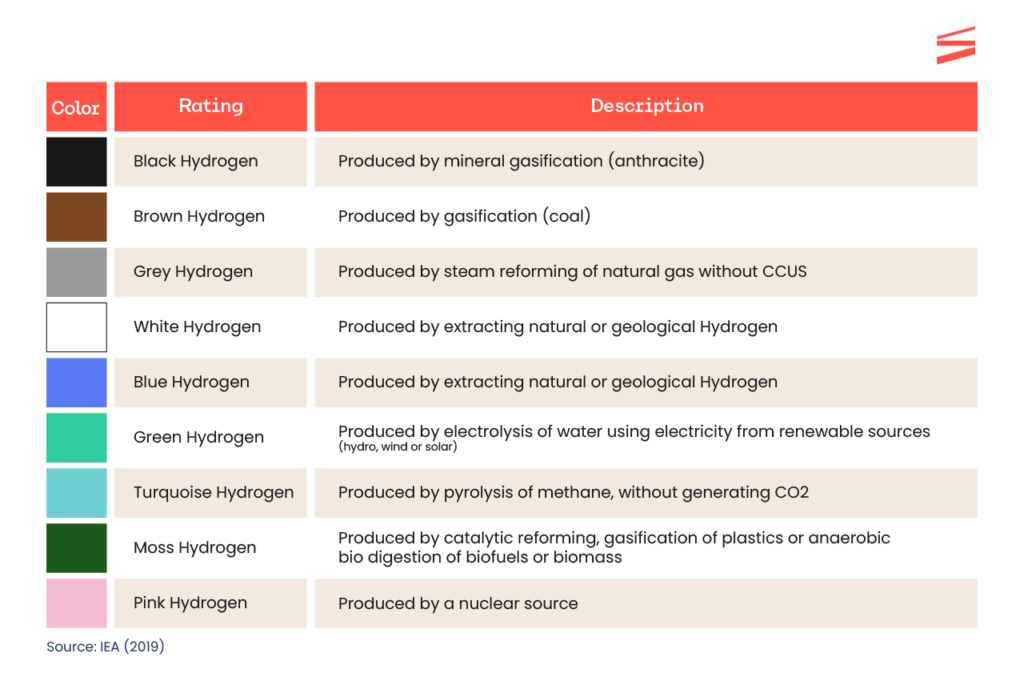Mais buscados:
Energy
Residential
Business
Renew Energy
Concerns and awareness about the importance of preserving the environment have led to the emergence of new technologies that aim to minimize the negative impact caused by human action on the planet. One innovation is Green Hydrogen, an alternative fuel that is potentially beneficial at combating climate changes currently affecting the planet, in addition to playing a key role in decarbonization.
If you want to understand what Green Hydrogen is exactly, how it’s obtained and what to expect from this new technology, continue reading!
Green Hydrogen, H2V, is a fuel produced from renewable resources, such as wind, solar or hydro. The technology is already in use in countries in the Middle East, Europe and North America and many of the optimizations for its production are still under development.
The product is obtained through the electrolysis of water. By applying an electric current in a controlled environment, the Hydrogen contained in water is separated for later use.
One of the main advantages of Green Hydrogen compared to other fossil fuels is that it does not emit carbon dioxide when burned. Instead, the only byproduct from the reaction is water vapor, which does not harm the environment. However, to be considered green, it is essential that the energy source used in the process be renewable, such as hydro, wind or solar.
Hydrogen production as a fuel using other energy sources implies in several other color classifications, as shown below:

Green Hydrogen can be used as fuel for cars, airplanes, boats, trains or any other land or air vehicle. It can also be used to generate energy, serving as a fuel for mobility, industrial processes and heating, substituting gas in many processes. For example, ammonia production plants that currently use fossil fuels have already begun preparing to use H2.
In addition to environmental aspects, savings is another important factor when it comes to the potential of Green Hydrogen. This is because Green Hydrogen is a very expensive product. It was inserted into the global agenda with the objective of pursuing technological improvements, scale gains and increase economic feasibility. Only when it becomes economically viable will it begin to replace other fuels.
In summary, the main advantages of Green Hydrogen include:
As a technology that is still relatively unexplored, the price of green hydrogen operations is still high. But as it becomes used more and there’s more incentive to use Green Hydrogen, it is likely that, in the not-too-distant future, it will become economically viable.
It is still too early to tell what the impact of Green Hydrogen will be when it is widely used in companies and power generators.
However, the expected impact is positive, as Green Hydrogen can minimize dependence on (or even replace the use of) fossil fuels and reduce CO2 emissions into the atmosphere.
Brazil could become a green powerhouse in the coming years and one of the main producers of Green Hydrogen, which is of major strategic importance.
Furthermore, the country stands out as an energy leader with a predominantly-clean energy grid and could contribute to Europe’s decarbonization with Green Hydrogen.
Most importantly, countries that have an abundance of water and renewable-energy production, which are inputs for producing Green Hydrogen, have high potential to be production references. Brazil has an abundance of both inputs and could become one of the top production players of this fuel.

Energy transition is the process by which an economy shifts from an energy system based on non-renewable energy sources, such as oil and coal, to an energy system based on renewable sources, such as wind and solar. This shift is necessary to reduce greenhouse gas emissions and mitigate the impacts of global warming.
With this in mind, many companies have transitioned to renewable energy sources, purchasing energy packages directly from clean energy producers, something made possible by the Free Energy Market.
With Green Hydrogen becoming ever more present, this transition tends to accelerate as power generators will have more ways to produce energy for businesses, making it cheaper and more affordable. All this without harming the environment.
Therefore, it is possible to conclude that Green Hydrogen is a trend that promises to revolutionize the way energy is consumed and stored. Despite being a new technology, you can see that it is extremely promising, given the global climate scenario and need for the energy transition.
Want to learn more about how your company can be sustainable? See how clean energy is advantageous for your company and the environment. Click on the content for more details!
See also:

Receive the latest news from Serena and the energy market!
